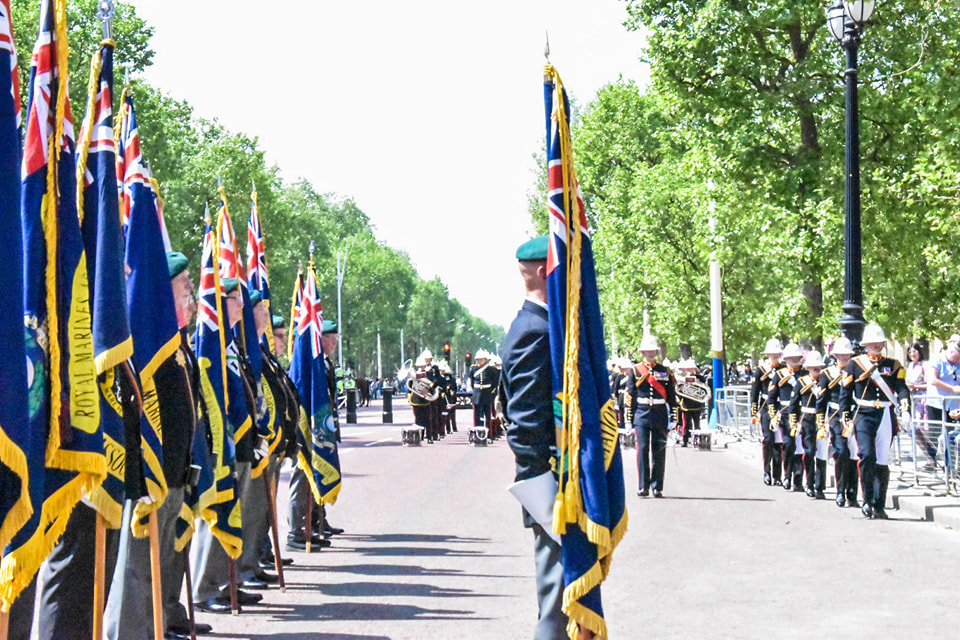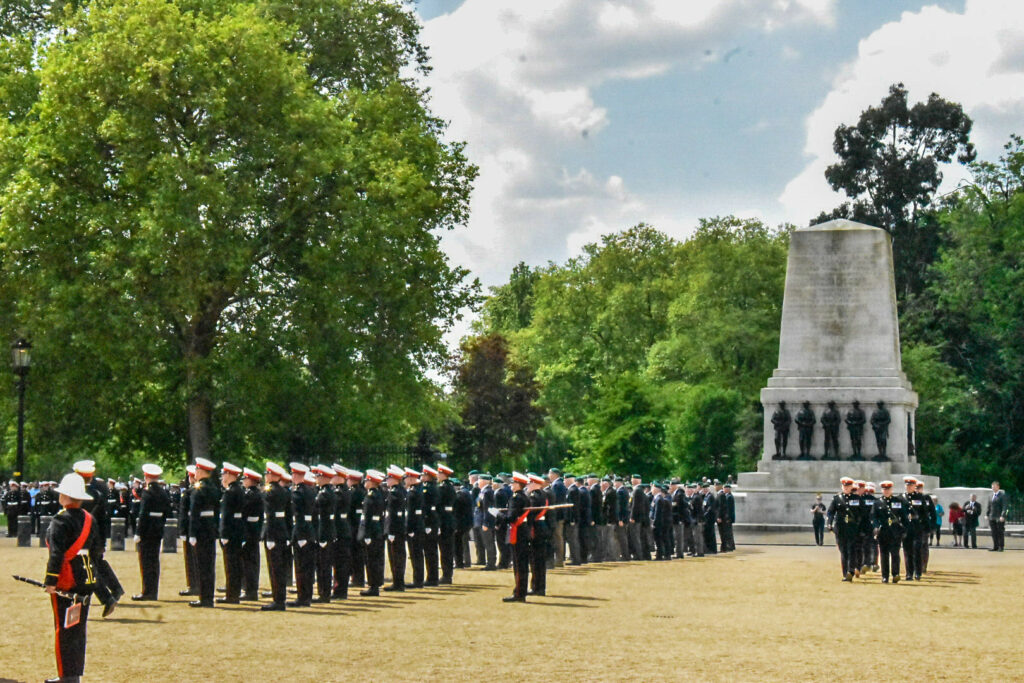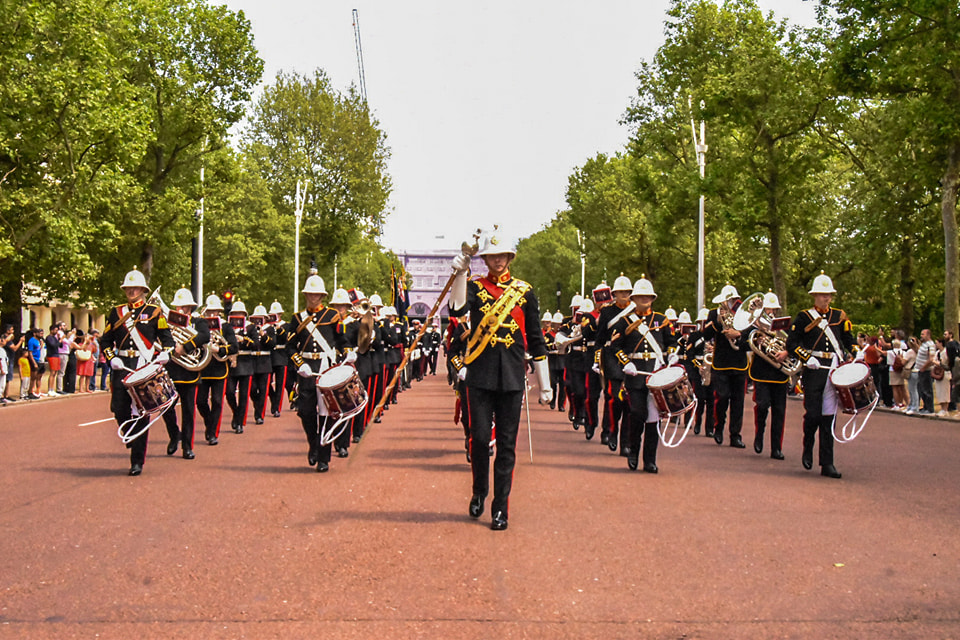The Graspan Memorial is named after the completion of Battle of Graspan in 1899 during the Boer Wars in South Africa. It was re-dedicated in 2000 to honour those Royal Marines lost in subsequent conflicts and is engraved: ‘In honour of all Royal Marines who have served their country by land and sea and who are forever remembered by their friends.’ Since the memorial’s re-dedication, it has served as the centrepiece of Graspan Parade, the largest annual parade dedicated to the Royal Marines which is entrenched with historical importance.

The Graspan memorial was originally unveiled in 1903 by HRH The Prince of Wales in the Cambridge Enclosure in St. James’ Park and was moved into storage in 1940 during the construction of the Citadel. The memorial was re-unveiled by the Duke of Edinburgh, the Captain General of the Marines, in 1948 in its current location on the north side of The Mall, next to the Admiralty Arch in London. This outdoor bronze sculpture by Adrian Jones depicts a marine, stood with his rifle and bayonet poised in defence over his wounded comrade. The bronze marines sit atop a Portland stone plinth, with a roll of honours for the two conflicts, and a brass plaque on the front inscribed ‘Erected by the officers and men of the Royal Marines who were killed in action or died of wounds or diseases in South Africa and China, 1899-1900’.
During the Battle of Graspan, the Marines were tasked entailed accompanying the Naval Brigade’s sailor and four 12-pounder guns, which were sent by rail to reinforce Lord Methuen’s relief on its way to raising the siege of Kimberley. The accompaniment involved two RMLI and an RMA company, totalling 190 officers and men, formed at Simonstown in South Africa, from the complements of HMS Doris, the Powerful and Terrible.
In the Battle of Belmont, they acted in support on the 23rd and, two days later, spearheaded the assault on the Boer’s positions, which were dug atop Graspan, Kopje, and by 0700hrs, the Royal Marines companies assembled and moved forward, towards the enemy, who held a crest half a mile away. As soon as the preliminary bombardment stopped, each Marine was only 4 paces from his neighbour and made a series of rushes.
Led by Lieutenant Taylor RN and Lieutenant Jones RMLI, the Naval Brigade stormed the Boers, who, when faced with the brigade’s bayonets, fled their position. Meanwhile, the 9th Lancers and Rimington’s Guides, located on the extreme right of the British advance, attempted to pursue the retreating Boers, however, they came under heavy fire from the rear of the stormed positions on Kopje. This forced the British Mounted men to draw rein, as the Boers disappeared to the north and east with their field guns. Heavy and accurate fire swept through the advancing British lines, killing five Marines and injuring over 90 others, including commanding officer Major J.H. Plumbe RMLI, Captain G. Senior RMA.
The parade steps off from the Horse Guards and makes way to the Graspan Memorial, where they gather to remember those who have fallen. The Parade features roughly 250 service men and women, made up of the HM Royal Marines Band, serving Royal Marine Commandos, Royal Marines Veterans and the Royal Marine Cadets, which participate in the marching contingent to give remembrance to those who have gone before.

This year celebrates 360 years of the Royal Marines and provided a fantastic demonstration of bringing together the whole of the Corps with almost 300 parade participants and thousands of spectators, making this year the largest parade for many years.

This information was provided by the Royal Marines History Society. If you would like to read more about the history of Graspan and the Royal Marines, please use the link.